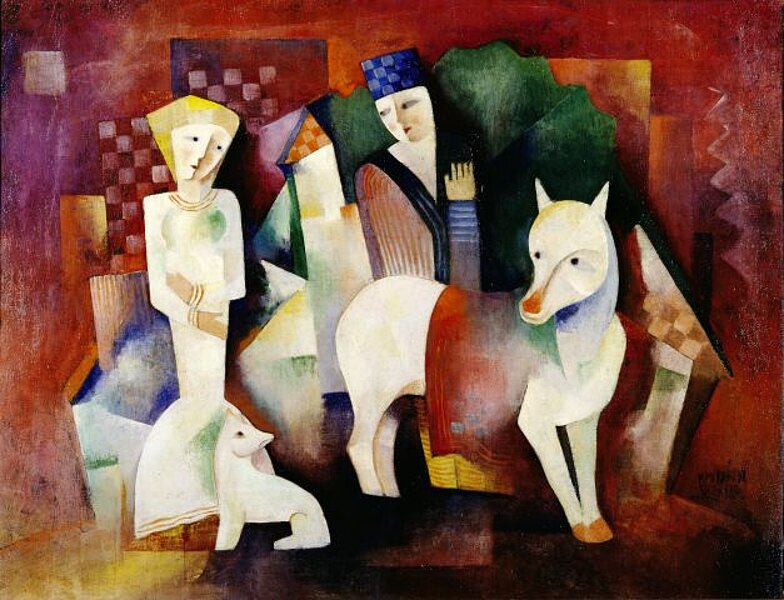
Kádár, Béla
Abreise aus dem Dorf
1925
| Object description | Oil on canvas |
|---|---|
| Object category | sculpture |
| Material | |
| Technique | |
| Dimensions |
Objektmaß:
height: 77 cm,
width: 100 cm
Rahmenmaß:
height: 99 cm,
width: 120 cm,
depth: 6,5 cm
|
| Year of acquisition | 1993 |
| Inventory number | B 783/0 |
| Creditline | mumok - Museum moderner Kunst Stiftung Ludwig Wien, ehemals Sammlung Paul Kövesdi, New York |
| Rights reference | Bildrecht, Wien |
| Further information about the person | Kádár, Béla [GND] |
In Béla Kádár’s paintings, Hungarian folklore meets European avantgarde. He studied in Budapest, and repeatedly travelled abroad. After World War One, Kádár departed permanently from his native country, and lived in Germany and France. In Germany, the expressionists inspired him, particularly so the artists of the “Blauer Reiter” group. But his paintings absorb other contemporary influences as well, among them cubism, futurism, and neo-primitivism. In the 1920ies, his artworks were exhibited in the renowned Berlin gallery “Der Sturm”, and published in the review bearing the same name. “Village Departure” shows a rural scene in a cubistically structured space. The two women and the animals are represented in a simplified manner, and oscillate between figuration and abstraction. Despite the ostensible flatness, the tiered configuration creates a certain degree of depth. The primordially white figures with their headwear in bright complementary colours are brilliant accents in an otherwise dark red backdrop. Despite the women’s and animals’ elegance, the overall impression of the painting is awkward and solid, being closer to Hungarian folk art than to compositions of international contemporaries, yet also funny in a way.
© mumok – museum moderner kunst stiftung ludwig wien

